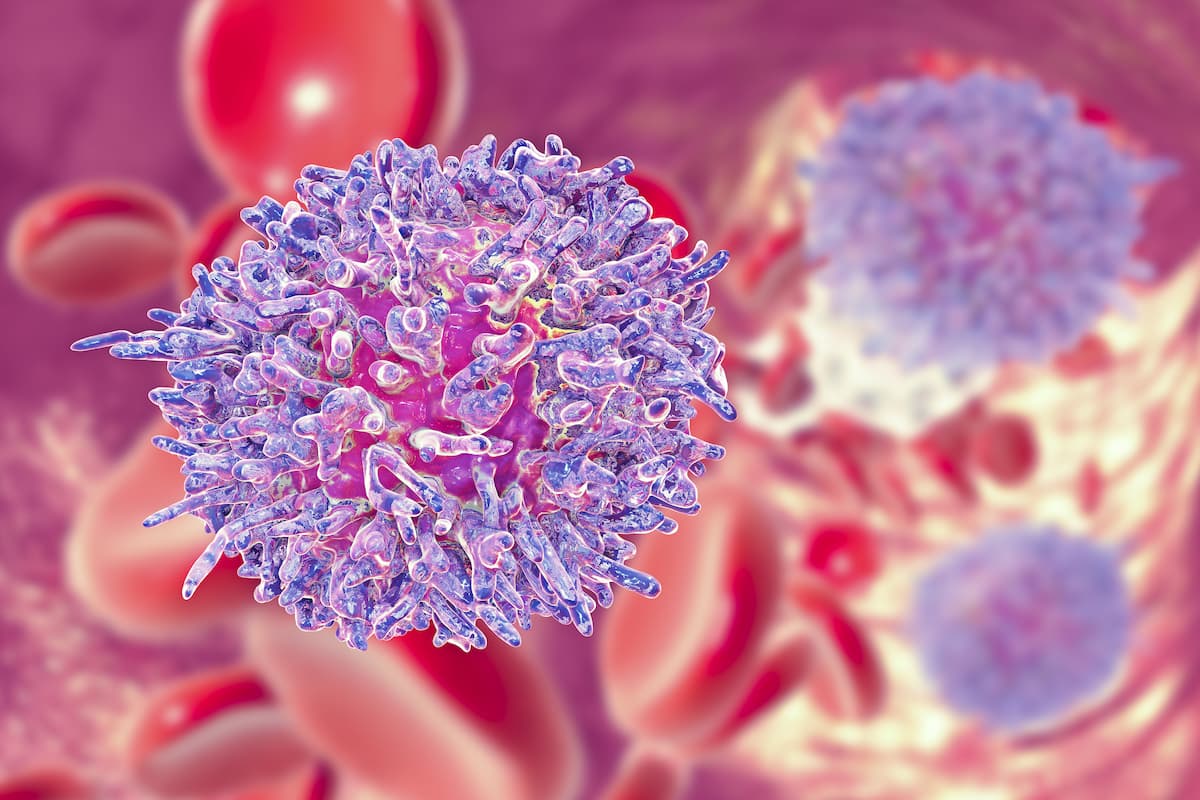Acalabrutinib Yields No Unexpected Safety Signals in Older CLL Population
Investigators identify only 1 death related to treatment with acalabrutinib among older, frail patients with chronic lymphocytic leukemia in the phase 2 CLL-FRAIL trial.
“This first interim analysis of an ongoing phase 2 study evaluating treatment with acalabrutinib in very old and/or frail patients with CLL did not show unexpected safety signals in comparison to prior published data,” the authors concluded.

Acalabrutinib (Calquence) produces no unexpected safety signals in the treatment of older, frail patients with chronic lymphocytic leukemia (CLL), according to findings from the ongoing phase 2 CLL-FRAIL trial (NCT04883749) presented at the 2023 European Hematology Association Congress.
“Although representing roughly 20% of the general CLL population, older patients remain underrepresented in clinical trials,” the study authors wrote in their poster presented at the meeting.
The study involved 30 patients with CLL who were aged 80 years or older (range, 54-88) and/or had a score of 3 or higher on the FRAIL score. Twenty-five patients had an ECOG score of 1 or higher, and the median CIRS score was 10 (range, 3-18).
Twenty-six patients did not have a TP53 mutation, while 3 had a TP53 deletion or mutation and 1 patient had TP53 data missing. Additionally, 19 patients (63.3%) harbored an IgHV mutation and 11 (36.7) did not.
“Patient characteristics show a representative cohort for this age group (that is) usually exempt from clinical trials,” the researchers wrote.
Nineteen patients (63%) did not receive previous treatment. In patients who did receive prior therapy, the most common regimen was chemoimmunotherapy, which was given to 73% of pretreated patients. Other prior regimens, each of which were given to 9% of previously treated patients included: ibrutinib (Imbruvica) plus obintuzumab (Gazyva) and venetoclax (Venclexta); bendamustine (Bendeka) plus ibrutinib and ofatumumab (Kesimpta); and obintuzumab plus venetoclax.
At the data cutoff of November 24, 2022, patients were on treatment for an average of 8 months, and 21 patients (70%) remained on therapy. Among patients who stopped treatment with acalabrutinib, the most common reason was adverse events (n = 5; 56%). During treatment exposure, 2 patients (22%) died and 2 patients withdrew consent.
All patients experienced at least 1 adverse event (AE) of any severity, with a pooled count of AEs totaling 200, including 35 (18%) that were grade 3 or higher. Fifteen AEs were severe, of which 8 (53%) were deemed to be related to the treatment. Two patients (6%) experienced atrial fibrillation of grade 2, while 2 others experienced grade 3 atrial fibrillation. Two patients who had both prior high blood pressure and atrial fibrillation experienced cardiac failure.
In total, 4 patients (13%) died, and among these deaths 1 (25%) was related to treatment with acalabrutinib. The other causes of death were infection (1 bacterial, 2 COVID-19–related pneumonia) and concomitant disease.
“This first interim analysis of an ongoing phase 2 study evaluating treatment with acalabrutinib in very old and/or frail patients with CLL did not show unexpected safety signals in comparison to prior published data,” the authors concluded.
Reference
Simon F, Ligtvoet R, Nosslinger T, et al. Safety and Treatment Adherence With Acalabrutinib in Very Old (≥80Y) and/or Frail Patients With Chronic Lymphocytic Leukemia (CLL) – Interim Safety Analysis of the Ongoing Phase II CLL-Frail Trial. Presented at: 2023 EHA Congress; June 8-11, 2023; Frankfurt, Germany. Abstract P630.
Newsletter
Stay up to date on recent advances in the multidisciplinary approach to cancer.